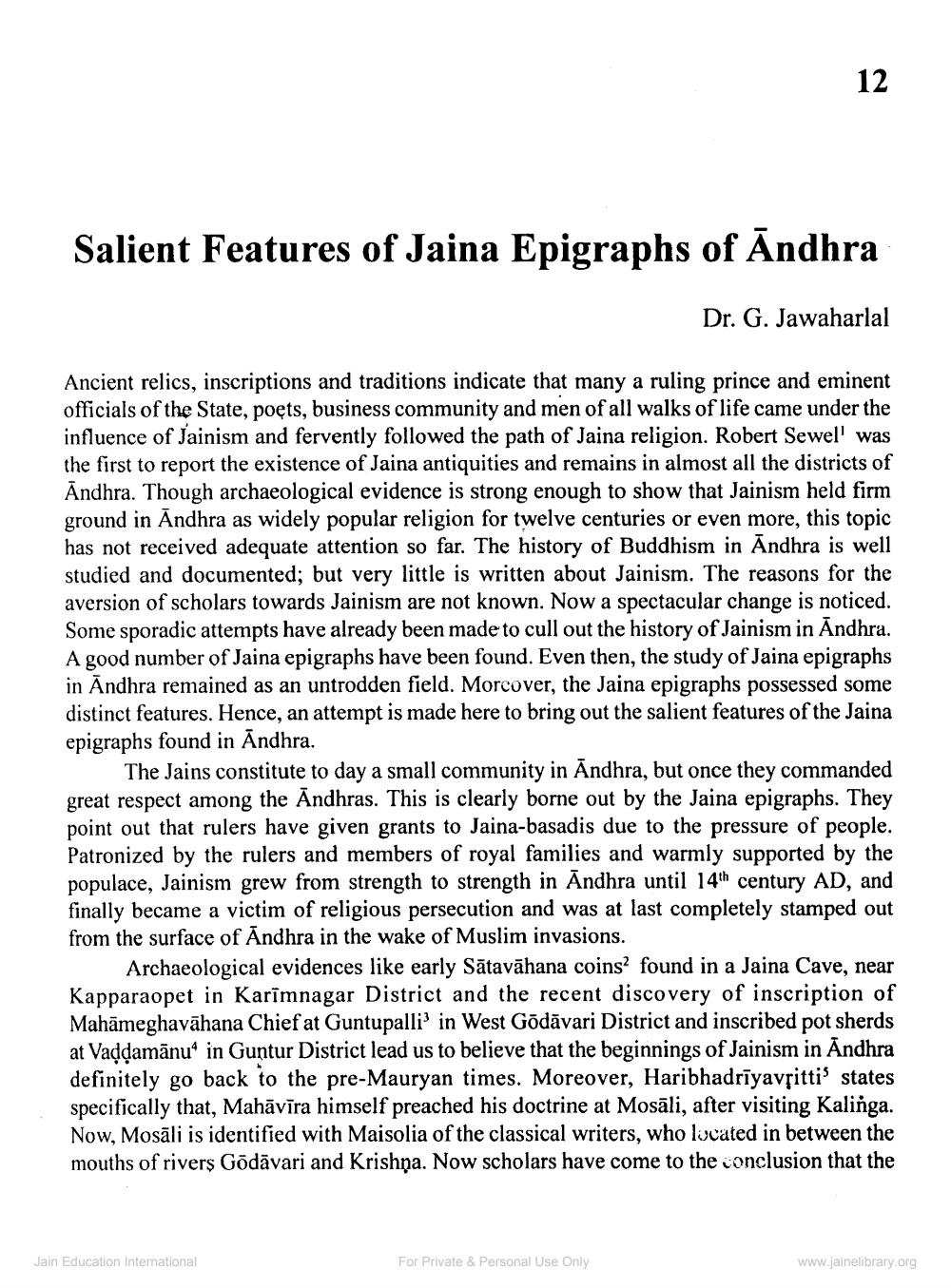________________
Salient Features of Jaina Epigraphs of Andhra
Dr. G. Jawaharlal
Ancient relics, inscriptions and traditions indicate that many a ruling prince and eminent officials of the State, poets, business community and men of all walks of life came under the influence of Jainism and fervently followed the path of Jaina religion. Robert Sewel' was the first to report the existence of Jaina antiquities and remains in almost all the districts of Andhra. Though archaeological evidence is strong enough to show that Jainism held firm ground in Andhra as widely popular religion for twelve centuries or even more, this topic has not received adequate attention so far. The history of Buddhism in Andhra is well studied and documented; but very little is written about Jainism. The reasons for the aversion of scholars towards Jainism are not known. Now a spectacular change is noticed. Some sporadic attempts have already been made to cull out the history of Jainism in Andhra. A good number of Jaina epigraphs have been found. Even then, the study of Jaina epigraphs in Andhra remained as an untrodden field. Morcover, the Jaina epigraphs possessed some distinct features. Hence, an attempt is made here to bring out the salient features of the Jaina epigraphs found in Andhra.
The Jains constitute to day a small community in Andhra, but once they commanded great respect among the Andhras. This is clearly borne out by the Jaina epigraphs. They point out that rulers have given grants to Jaina-basadis due to the pressure of people. Patronized by the rulers and members of royal families and warmly supported by the populace, Jainism grew from strength to strength in Andhra until 14th century AD, and finally became a victim of religious persecution and was at last completely stamped out from the surface of Andhra in the wake of Muslim invasions.
Archaeological evidences like early Sātavāhana coins? found in a Jaina Cave, near Kapparaopet in Karimnagar District and the recent discovery of inscription of Mahāmeghavāhana Chief at Guntupalli' in West Gödāvari District and inscribed pot sherds at Vaddamānu" in Guntur District lead us to believe that the beginnings of Jainism in Andhra definitely go back to the pre-Mauryan times. Moreover, Haribhadrīyavpitti' states specifically that, Mahāvīra himself preached his doctrine at Mosāli, after visiting Kalinga. Now, Mosāli is identified with Maisolia of the classical writers, who located in between the mouths of rivers Gödāvari and Krishna. Now scholars have come to the conclusion that the
Jain Education International
For Private & Personal Use Only
www.jainelibrary.org




